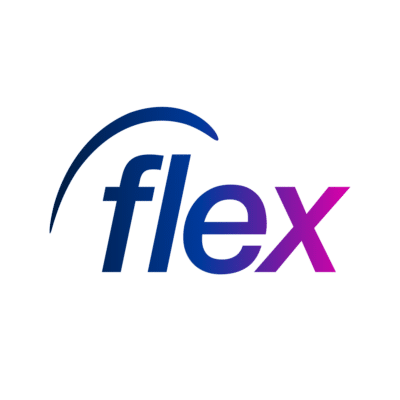
Recruitment in 2025 is defined by increasing pressure to fill vacancies swiftly while maintaining high standards of candidate quality. Prolonged hiring cycles can disrupt business operations, undermine team morale, and result in poor customer experiences, with the Society for Human Resource Management’s latest report highlighting the growing importance of time-to-fill metrics across industries.
Understanding the true cost of lengthy hiring processes
Lengthy hiring cycles carry a significant price tag that extends far beyond the immediate recruitment budget. Every unfilled role incurs direct costs, such as lost productivity and overtime pay for existing staff, and indirect costs, including missed business opportunities and delayed projects. According to the Society for Human Resource Management, the average time-to-fill varies widely by sector, but even a short delay can have a ripple effect across an organization.
Key impacts of delayed hiring:
- Financial drain: Vacant roles can cost companies thousands in lost revenue and increased operational expenses.
- Opportunity costs: Projects may be postponed, and competitors may well gain an advantage from this.
- Team strain: Existing employees often shoulder extra workloads, increasing the risk of burnout and disengagement.
- Negative candidate experience: Top candidates may lose interest or accept other offers if processes drag on, damaging employer reputation.
A data-driven approach is essential for understanding your organization’s unique cost of vacancy. Calculating these metrics can help prioritize recruitment improvements. Read our resource on providing a step-by-step guide on using recruitment metrics to drive better hiring outcomes.
1. Identifying bottlenecks in your recruitment funnel
Pinpointing where delays occur in your hiring workflow is the first step to meaningful process improvement. Begin with a comprehensive audit, mapping each stage from job requisition to onboarding. Tracking key metrics — such as application review time, screening duration, interview scheduling, offer acceptance, and onboarding speed — provides visibility into where candidates are most likely to drop off or get stuck.
Common recruitment bottlenecks:
- Slow application review: Delays in shortlisting candidates due to manual processes.
- Lengthy interview scheduling: Coordinating multiple stakeholders’ diaries often causes weeks-long holdups.
- Protracted decision-making: Lack of clear frameworks leads to indecision and missed opportunities.
- Inefficient onboarding: Administrative hurdles can delay start dates and impact early productivity.
To overcome these obstacles:
- Implement data collection systems that track each stage’s duration and candidate drop-off rates.
- Use process mapping to visualize the entire workflow, making it easier to identify and address issues.
Combining these approaches ensures your recruitment funnel is both transparent and optimized for speed and quality.
2. Using technology to accelerate candidate sourcing and screening
Technology is a powerful ally in reducing time-to-fill without sacrificing candidate quality. AI-powered tools can rapidly identify, match, and shortlist candidates, while automated screening platforms streamline the initial vetting process. Predictive analytics help forecast candidate success and retention, enabling more informed hiring decisions.
Key technological advancements shaping recruitment in 2025:
- AI-driven sourcing: Algorithms analyse resumes and profiles to quickly identify the best-fit candidates.
- Automated screening: Chatbots and automated assessments reduce manual workload and bias.
- Predictive analytics: Data models predict candidate success, improving long-term retention rates.
- Mobile-optimized applications: Streamlined mobile processes attract a wider, more diverse talent pool.
- Seamless integrations: Modern platforms connect with HRIS and ATS systems for end-to-end process efficiency.
3. Optimizing the interview process for efficiency and effectiveness
The interview stage is often the most time-consuming part of recruitment. Streamlining this process results in significant gains in both speed and candidate experience. Adopting structured interview techniques — where each candidate is assessed using the same set of criteria — ensures fairness and consistency, while reducing the time spent deliberating.
Best practices for interviews:
- Structured interviews: Use standardized questions and scoring rubrics to save time and enhance objectivity.
- Panel vs. sequential interviews: Panels can reduce the number of rounds, but sequential interviews may be better for roles requiring specialist input.
- Video interviewing: Digital interviews are now standard. Use clear guidelines and technology to minimize scheduling conflicts and candidate fatigue.
- Clear decision-making frameworks: Predefine criteria for moving candidates forward, reducing unnecessary delays.
- Manager training: Equip hiring managers with the skills to make timely, confident decisions.
A well-structured interview process not only accelerates hiring but also improves the candidate’s perception of your organisation.
4. Building robust talent pipelines for anticipatory hiring
Proactive recruitment strategies are essential for reducing time-to-fill in a competitive market. Building and nurturing talent pipelines allows organizations to respond swiftly when vacancies arise. This involves engaging potential candidates before roles become available, maintaining regular communication, and using automation for personalized touchpoints.
- Strategic talent pools: Identify critical roles and start building relationships with potential candidates early.
- Automation and personalization: Use recruitment marketing tools to keep candidates engaged with relevant updates and opportunities.
- Internal mobility: Encourage existing employees to apply for new roles, reducing external hiring needs and retaining institutional knowledge.
- Alumni networks: Tap into former employees as a valuable source of pre-vetted talent.
- Temporary-to-permanent pathways: Platforms like Indeed Flex help organizations maintain connections with high-quality temporary workers, creating a ready pool for future permanent hiring.
Anticipatory hiring not only shortens the recruitment cycle but also ensures a stronger fit when roles become available.
5. Streamlining the offer and onboarding process
The period between a successful interview and a candidate’s first day is critical. Delays in presenting offers or slow onboarding can result in candidates withdrawing or arriving disengaged. Speed and clarity are key.
Steps to accelerate offer and onboarding:
- Prompt offer presentation: Make offers as soon as a decision is reached, using digital documentation to avoid postal delays.
- Efficient negotiation: Prepare competitive packages and clear guidelines to expedite negotiations without overspending.
- Digital onboarding: Use online portals for paperwork, policy training, and introductions to streamline the process.
- Pre-boarding engagement: Maintain regular contact with new hires during notice periods to keep them engaged and informed.
- Track offer-to-start metrics: Measure and refine your process to minimize dropouts and delays.
6. Managing multiple recruitment channels effectively
As organizations diversify their talent acquisition strategies, managing multiple recruitment channels becomes increasingly complex. Centralising agency management and standardizing processes across direct sourcing, referrals, and staffing partners can prevent duplication of efforts.
- Centralised agency management: Use a single platform to coordinate all external partners, reducing administrative burden and delays.
- Process standardization: Ensure consistent candidate experience and compliance across all channels.
- Performance tracking: Monitor source effectiveness using metrics like time-to-fill, quality of hire, and retention rates.
- Vendor Management Systems: Gain visibility and control over all recruitment partners and channels.
- Unified contingent workforce management: Many organizations are turning to platforms such as those highlighted in Forbes’ agency management analysis for greater efficiency and oversight.
A coordinated approach helps reduce time-to-fill and ensures better hiring outcomes across all recruitment channels.
7. Balancing speed with quality of hires
While accelerating hiring is essential, it should never come at the expense of candidate quality. The challenge is to maintain rigorous standards while moving quickly through the recruitment process.
Strategies to maintain quality while hiring faster:
- Non-negotiable quality indicators: Define clear standards for skills, experience, and cultural fit that must be met.
- Pre-employment assessments: Use job-relevant tests to efficiently evaluate candidate competencies.
- Streamlined reference checks: Digital tools can automate and speed up reference checking without sacrificing thoroughness.
- Cultural fit assessments: Structured interviews and situational judgement tests can determine fit even in condensed timelines.
- Quality of hire metrics: Track new hire performance, retention, and satisfaction to validate process improvements over time.
By embedding these safeguards into your process, you can confidently speed up hiring without risking long-term performance.
8. Adapting to fluctuating demand with flexible workforce strategies
Recruitment needs rarely remain static. Seasonal peaks, project-based surges, and unexpected absences require organizations to adapt quickly. Scalable recruitment processes and flexible staffing options are essential.
- Scalable processes: Design workflows that can expand or contract in response to demand spikes.
- Temporary and contract staffing: Fill immediate needs with skilled contingent workers, maintaining business continuity.
- Reliable staffing partners: Build relationships with trusted providers who can supply talent quickly during peak periods.
- Proactive workforce planning: Use historical data to anticipate seasonal or project-based hiring needs.
- Technology for demand forecasting: Advanced platforms help predict and manage workforce fluctuations efficiently, as outlined in these recruitment strategies for fluctuating demand.
9. Measuring success: Key metrics for tracking recruitment efficiency
Continuous improvement starts with having robust measurements in place. While time-to-fill remains a core metric, a comprehensive view of recruitment efficiency requires a broader set of KPIs.
| Metric | Description | Why it matters |
|---|---|---|
| Time-to-fill | Days from job posting to accepted offer | Primary indicator of process speed |
| Quality of hire | Performance and retention of new hires | Assesses long-term recruitment success |
| Source effectiveness | Performance by recruitment channel | Optimizes resource allocation |
| Candidate satisfaction | Feedback on recruitment experience | Improves employer brand and future attraction |
| Offer acceptance rate | Proportion of offers accepted | Highlights competitiveness and process appeal |
Implementing dashboards and reporting tools gives real-time visibility into these metrics, helping organizations connect recruitment efficiency with broader business objectives. Regularly reviewing and refining these KPIs ensures your hiring process remains both fast and effective.
Transform your recruitment process today
Indeed Flex empowers businesses to reduce hiring delays and maintain top-tier candidate quality with a pre-verified, on-demand workforce. Discover how our innovative platform can optimize your staffing strategy—request a demo today.
Book a demo
Discover a staffing solution tailored to suit your business requirements








